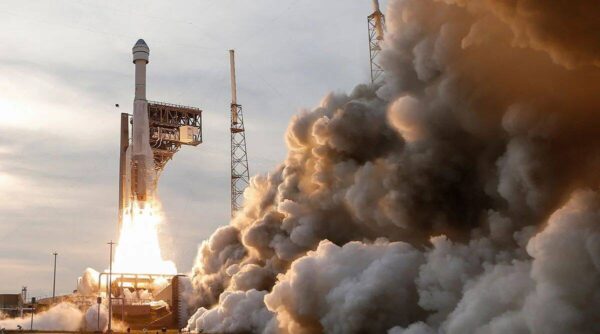Boeing recently skyrocketed the CST-100 Starliner spacecraft to the orbit successfully. The passenger spacecraft, which will soon be anchored at the International Space Station (ISS), is arranged to complete its mission next week. Boeing is currently one of only two companies (along with Spacex Elon Musk) which is funded directly by NASA to develop a spacecraft that can carry astronauts outside the Earth’s atmosphere. While News is waiting at the Starliner to reach ISS and complete the docking maneuver, here are some facts between the stars about the mission you encounter.
Developed in partnership with NASA
Boeing has partnered directly with NASA to develop the Starliner CST-100 spacecraft. Some can be used again designed for the mission of low earth orbits such as sending members of the crew to ISS and returning. This craft is produced by Boeing as part of NASA CCP (Commercial Crew Program) and will complete its first successful mission next week.
Currently in the second overt (orbital flight test), Boeing Starliner will have the first CFT (crew flight test) in Q4 2022 if the current mission is successful. While the company initially planned to produce three such space capsules, then revised its plans and now planned to take turns between two ships.
What’s inside the Starliner?
Boeing Starliner carries more than 500 pounds of cargo (225 kg) during the current mission, often 2, according to reports by space.com. Most of this cargo is food and supply for the current crew on the international space station. The rest of the cargo belongs to Boeing and consists of memorabilia such as flags and pins that commemorate the United States Higher Education and Higher Education University (HBCU).
Third time’s the charm
Most people know that this is not the first Boeing Starliner test flight. This is actually the company’s three efforts to succeed in completing frequent missions. Back in December 2019, Boeing tried to make his first Starliner flight, over-1. However, after the software error that maintains the wrong mission calculation, spacecraft uses excessive fuel too fast, which leads to landing back in New Mexico only two days after launch. The company then approached the second effort last year, but the problem with the propellant valve craft caused the flight to never occur, because the Starliner had to be brought back to the factory to repair the valve. Now, after successfully reaching the intended orbit, the Starliner seems to go to the Docking which is successful in what will be the third overall effort, and the second test flight.
Bumpy ride
Although the ongoing mission is currently successful so far, test flights are not free from problems. Boeing Starliner witnessed two driving that failed during the launch. The first thruster came out a second after the Starliner began to burn his driving force to place himself into his last orbit. The flight control system is diverted to the second thruster, which is also closed after another 25 seconds. The third thruster then works as intended and the starliner ability to reach the planned orbit is fortunate. Boeing is currently studying this problem and claims that a failure that fails should not affect the rest of the mission, which includes more exile to enter the orbit. Ten of 12 Thrusters Starliner need to work, according to Boeing.
Back next week
If everything goes according to plan, the Starliner spacecraft will return to Earth next week after anchoring with ISS for four to five days. The landing will take place in one of the five possible sites, including the White Sands missile series in New Mexico. NASA and Boeing then collectively plan for future test flights, this time with a group of astronauts chosen by NASA. This mission, the first crew flight test or CFT, is scheduled to take place at the end of this year.

